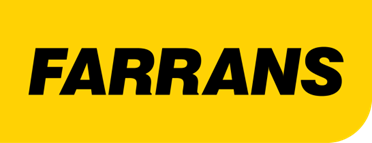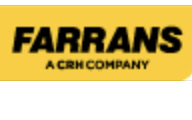Information
-
Document No.
-
Site Name
-
Project No.
-
Conducted on
-
Prepared by
-
Location
-
Personnel Audited
1.0 Housekeeping
-
Site entrance clear and tidy and free from mud and debris?
-
Site compound and offices clear and tidy?
-
Are there designated waste collection points (i.e. bins or skips) and are these maintained?
-
Is the material storage area well laid out and materials adequately stored?
-
Designated vehicle / wheel washing area?
-
Re-fueling area tidy?
-
Are oils/fuels/chemicals stored on site and in a safe manner?
2.0 Fuel / Oil / Chemical Management
-
Are oils and chemicals stored on a bund with 110% capacity in a COSHH container?
-
Are oils / fuels / chemicals clearly labelled?
-
Are fuel bowsers bunded and secure?
-
Are all oils, fuels or chemical stored away from water courses?
-
Does static plant have appropriate drip trays or plant nappies in place?
-
Are spill kits available in the immediate vicinity?
-
Are spill control measures effectively communicated? (i.e. posters, notices or information boards)
-
Are gas bottles correctly stored in a secure cage?
3.0 Waste Management
-
Is there a designated waste collection point set up and maintained?
-
Are waste skips clearly labelled with appropriate signage?
-
Are the following waste types segregated or sent to a recycling facility?
-
Paper/Cardboard
-
Plastics
-
Waste Timber
-
Waste Steel
-
Canteen Waste
-
Are hazardous wastes, (i.e. spray tins, solvents, oily rags, etc.) segregated and stored correctly prior to disposal?
-
Is oil contaminated material correctly disposed of?
-
Is a bunded Waste Oil tank in place?
-
Are all bunds, drip trays and absorbent pads fit for purpose?
-
Are MSDS or COSHH assessments available for all chemicals in use on site?
-
Chemical containers clearly marked and labelled?
-
Is the Waste Management Register up to date?
4.0 Pollution of Watercourses
-
Has the existing drainage network been identified and suitable control measures implemented?
-
Surface water management in place, maintained and adequate?
-
Are watercourses free from silt and suspended solids?
-
Are watercourses free from signs of pollution?
-
Is water quality monitoring being undertaken?
-
Are all excavated materials stored >10m from registered and ordinary watercourses?
-
Have all water bodies and aquifers been identified and suitable control measures been implemented?
-
Are the relevant permits / consents / exemptions in place for type of work being undertaken?
5.0 Use of Materials/Natural Resources
-
Are materials stored to avoid deterioration and damage?
-
Are all perishable materials stored under suitable cover?
-
Recycled materials being used where possible?
-
Are surplus materials returned to suppliers or used elsewhere?
6.0 Ecology
-
Are works coordinated with an Ecologist / ECoW / Environmental Advisor?
-
Have potential habitats been identified and suitable control measures been implemented?
-
Have protected plant species been identified and maintained with an adequate buffer zone and signage?
-
If nesting bird season, have working areas been approved by an Ecologist?
-
If reptile hibernation period, have working areas been approved by an Ecologist?
-
Have mammal sets been identified and checked for evidence of use by an Ecologist?
-
Are bat or bird boxes in place?
-
Have invasive plant species (Japanese Knotweed, Himalayan Balsam or Giant Hogweed) been identified and control measures implemented?
7.0 Air Pollution/Dust
-
Are carbon emissions recorded for fuel used on-site?
-
Are machines well maintained and turned off when not in use?
-
Is plant free from exhaust fumes and in line with Non Road Mobile Machinery (NRMM) targets?
-
Is dust monitoring being carried out and suitable control measures implemented?
-
Are dust suppression methods being utilised? (i.e. wetting down by water bowser, water hose fitted to concrete saw, etc.)
8.0 Noise and Vibration
-
Are machines switched off when not in use?
-
Are noise barriers in place?
-
Are noise levels monitored at sensitive receptors?
-
Have all efforts been made to avoid public complaints regarding excessive noise levels?
9.0. Water Consumption
-
Water use being metered on site?
-
Is there hot and cold running water in site toilets?
-
Is a grey water system (i.e. rain water harvesting) in place at site compound?
-
Is ground water being used for water bowsers rather than mains?
-
Are other methods / sources being utilised to supply water for site specific activities?
10.0 Emergency Resources
-
Is there an adequate supply of spill kit materials?
-
Are designated spill kit areas suitably sited? (i.e. beside refueling area, near watercourses)
-
Contents of spill kit materials is regularly checked and replenished?
-
Is there an adequate supply of silt mitigation products? (i.e. silt fencing, wooden posts, sedimats, etc.)
-
Are the environmental emergency response contact numbers clearly identified at the site office?
-
Are environmental emergency response drill carried out?
11.0 Documentation
-
Are environmental plans (CEMP, SEMP, SWMP, EERP) available at the site office?
-
Are permits / licences / exemptions / EA letters of correspondence available at the site office?
-
Are records of waste disposal (Waste Transfer Notes and Waste Consignment Notes) available at the site office?
-
Copies of waste carriers licences available at the site office?
-
Has a waste duty of care check been carried out?
-
Is there an environmental notice board on display at the site office / compound?
-
Are the latest Farrans policies on display at the site office / compound?








